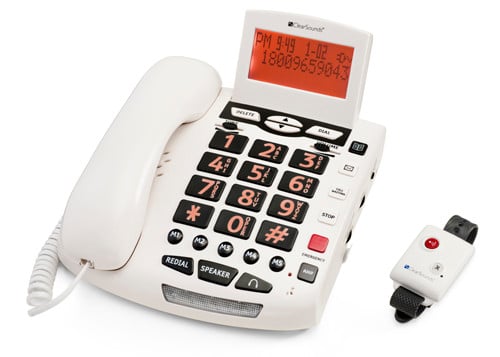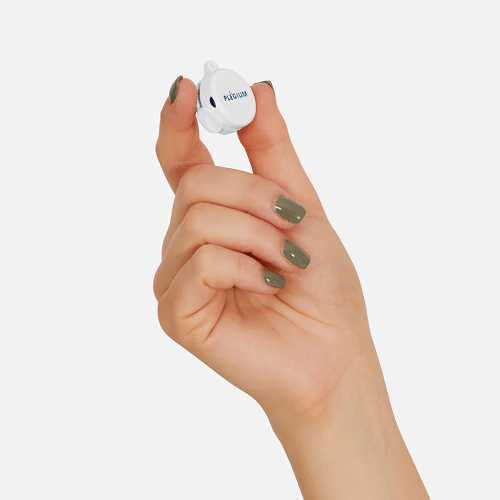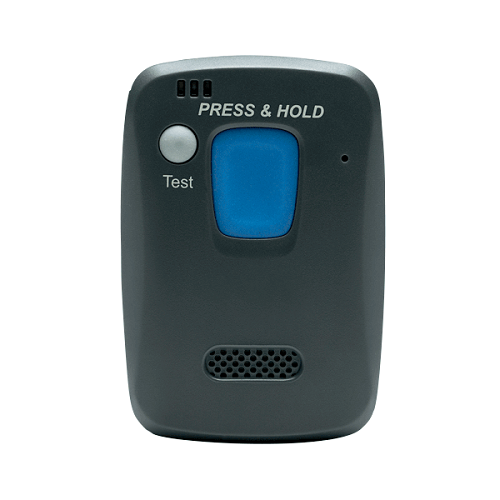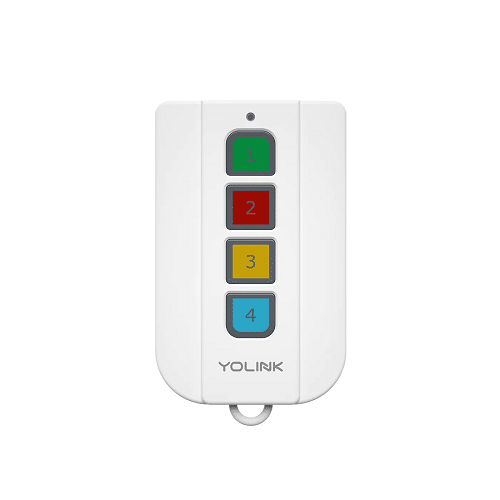Medical Alert Systems with No Monthly Fees in 2025
Key Takeaways
- Low-cost help buttons are best for people who are not at high risk for falls or wandering since fall detection and live GPS tracking are typically not included in these systems.
- Most medical alert systems without monthly fees dial a limited number of emergency contacts, but some go straight to 911 dispatchers.
- Some help button devices don’t have two-way talk and instead send prerecorded messages to select family, neighbors, or caregivers.
Whether you live alone or with housemates, knowing help is on the way when you need it is one of the most important safety measures you can take. Our team has found that medical alert systems are one of the most effective emergency tools on the market.
These devices typically cost between $20–$60 monthly for a 24-hour monitoring service, with additional charges for equipment and add-ons, like fall detection. But not everyone needs, or can afford, a 24/7 service. And for many people, a more basic device that connects directly to family or local emergency services is enough. That’s where medical alerts without monthly fees come in.
Choosing a medical alert system with no monthly fee could save you money, but you’ll sacrifice important features, like 24/7 personalized assistance, automatic fall detection, live GPS tracking, and even two-way talk. That said, our team found a few worthwhile medical alert systems with no monthly fees. In addition to highlighting each device, we’ll explain the differences between monitored and unmonitored medical alert systems to help you decide which type of system best suits your situation.
How we reviewed medical alert systems with no monthly fees
Our team looked for medical alert devices with no monthly fees that offered an experience similar to a monitored medical alert system. We also studied the results of a survey we launched to understand which features medical alert buyers typically want.
For in-home systems, we prioritized wearable buttons that connect to a base station with two-way audio. For mobile systems, we looked for devices with GPS. Our survey results indicate people want medical alert systems with fast, reliable response times, so we also included devices that immediately dial 911. Battery life, water resistance, and contact list capacity were also factored into our decisions. We read user manuals and reviews on third-party websites for insight into each device’s quality and ease of use.
Learn more about our medical alert systems review methodology.
How medical alert systems with no monthly fees work
Medical alert systems with no monthly monitoring fees are activated with the press of a button. Once pushed, the system dials a series of phone numbers until someone answers. The numbers can belong to the user’s caregivers, health care providers, family members, neighbors, or even 911.
Some devices have built-in speakers for easy two-way conversations, while others will play a prerecorded message or send an automatic text message to emergency contacts. The emergency contacts are preset by the user (or caregiver) during the initial setup. If you choose to add personal contacts as your emergency help, it’s important to discuss this plan and ensure they’re willing and able to be available for these calls.
A few of the medical alert systems we looked at are capable of sharing your GPSⓘ GPS technology uses satellites to provide users with positioning, navigation, and timing services. location during an emergency to help people find you. Others are designed for at-home use only.

We were not able to find reliable fall detection devices without monthly fees. Most systems with fall detection connect directly to a monitoring center, and even smartwatches with fall detection require a monthly cellular service fee. Learn more about our recommended fall detection devices.
Features of medical alerts with no monthly fees
Medical alert systems with no monthly fees have limited features. Here’s what you may find:
- Caregiver calling: The device calls a list of preprogrammed numbers until someone answers. Some people enter 911 as the last number on the list in case no one else picks up.
- Direct to 911: Instead of calling caregivers, the device always calls 911. It’s important to note you can get fined by your local 911 service if the device causes multiple false alarms.
- Two-way communication: Devices with two-way communication allow you to talk to caregivers or 911 and request specific assistance, but this feature is uncommon among medical alerts with no monthly fees.
- Generic messages: Some devices without two-way communication automatically play a generic message asking for help when someone answers the phone.
- GPS location sharing: In devices without monthly fees, this is a rare and limited feature. When a device has this capability, your location is texted to caregivers when you press the help button, but live tracking is typically not included
- Battery life: Mobile medical alerts with no monthly fees don’t have many features to drain battery life. Rechargeable batteries can last for months, and disposable batteries can last for years.
Monitored vs. no monthly fee medical alert systems
Medical alert systems with no monthly fees, also called unmonitored systems, offer an annual savings of about $240–$720 when compared to those requiring monthly service payments. These monthly fees typically cover the cost of monitoring services, plus these optional features:
- Cellular service (allows mobile and landline-free devices to place two-way calls)
- Live GPS tracking
- Automatic fall detection
- Add-on services, like check-in calls or medication reminders
- Caregiver app or portal
- Equipment leasing (when available)
Medical alert systems with no monthly fees don’t typically offer these services, and according to Christopher Norman, a geriatric nurse practitioner, they may provide a false sense of security. “Always make sure a product is going to do what you think it’s going to do,” he advised. “There is sometimes a considerable difference between good marketing versus what a product actually does, and in this case that difference can mean potential harm to a person’s health and well-being.”
It’s important to carefully weigh the pros and cons of monitored vs. unmonitored medical alert systems to choose the safest option. “On the surface, money savings is a potential reason for choosing a medical alert system with no monthly fees,” said Norman, “but consider the overall cost to your health and well-being for purchasing the wrong product for the wrong situation. How do you put a price tag on that?”
Use the chart below to compare the services you’ll get with a monitored, monthly fee medical alert service to what you’ll get with an unmonitored, no monthly fee medical alert.
Monitored medical alerts | No monthly fee medical alerts |
|---|---|
| ✔ Calls answered 24/7 | ✘ Calls may be missed by emergency contacts (other than 911) |
| ✔ No fines for false alarms sent to call center | ✘ Local 911 dispatch may issue fines for repeat false alarms |
| ✔ Fall detection is readily available | ✘ Fall detection is rare |
| ✔ Live GPS tracking | ✘ GPS location is provided only when the button is pressed, if at all |
| ✔ Two-way talk is always available | ✘ Two-way talk is sometimes available |
| ✔ Health details and hospital preferences shared with emergency dispatchers right away | ✘ Personal details unavailable to dispatchers or emergency responders |
✔ Lockboxⓘ Typically attached to the outside of your home, a medical alert lockbox is a common add-on accessory that stores a house key, giving emergency responders access to the home. details shared with emergency responders (when lockbox is used) | ✘ Without knowing lockbox details, emergency responders may have to break down your door |
| ✔ Battery life on mobile devices (3–15 days) | ✔ Battery life on mobile devices (2 months to 4 years) |
| ✔ Caregiver apps readily available | ✘ Caregiver apps are rare |
| ✘ May charge an activation fee | ✔ No additional fees |
Best Monitored Medical Alert System: Medical Guardian
Top No Monthly Fee Medical Alert: See options below
Best medical alert systems with no monthly fees
ClearSounds CSC600ER Amplified SOS Alert Phone

Price: $199.95
The ClearSounds CSC600ER Amplified SOS Alert Phone combines a landline phone with a wearable help button. Pressing the red SOS button on the wristband or keypad activates the system to call up to five emergency contacts in succession—until someone answers the call—and then plays a prerecorded message. Emergency contacts can call you back and automatically access your speakerphone by entering a PIN, allowing them to talk to you even if you’re unable to answer the phone.
We like this phone’s accessibility features for people who have hearing loss, vision loss, or limited mobility. The phone has an amplified speakerphone, an adjustable, extra loud ringer, a visual ringer and backlit digital screen, and large buttons.
On the downside, the wearable panic button only works within 100 feet of the base unit, which is a much shorter distance than the industry-leading 1,400-foot range offered by some monitored medical alerts, like Medical Guardian. For comparison, 100 feet is equivalent to the length of approximately six cars. For people who live in small apartments, this may be a wide enough range. For those in larger homes, or who want protection when they go outside, this may not be a practical system.
Plegium Smart Emergency Button

Price: $34.95
The Plegium Smart Emergency Button is an affordable solution for people who use smartphones and is activated by pressing the button for two seconds. The emergency button requires a Bluetooth connection with a smartphone, so it can send automatic texts and calls through your phone when triggered. Unfortunately, it won’t work if you close out the Plegium app, turn off Bluetooth, or accidentally leave your phone behind. The app needs to be open the entire time for the button to remain operational, which can be an extra drain on your phone’s battery. You may want to invest in a portable battery charger for when you’re planning to spend an extended day out while using the button.
Up to five emergency contacts can be added for no monthly fee, and your contacts can see your current GPS location when the emergency button is pressed. Plegium also offers a premium subscription service for $4.99 per month, which includes 24/7 monitoring service and real-time GPS tracking.
LogicMark Guardian Alert 911 Plus

Price: $449
LogicMark sells several medical alert systems with no monthly fees. We like the Guardian Alert 911 Plus because it doesn’t require a landline connection and can be used both at home and on the go. Operating on 4G LTE, the Guardian Alert 911 Plus immediately calls 911 when the button is pressed, and it has two-way communication, so you can communicate with emergency operators.
No Wi-Fi connection or data plan is needed because it connects to local cell towers wherever you are. The device has a chip in it like a cellphone does, which keeps it connected to the 4G LTE network. This constant connection explains why it costs so much despite only calling 911. It’s worth noting if you’re traveling to locations where cellular service is spotty or unreliable, you may have trouble connecting.
One of the weaknesses of this system is that it can’t be programmed to call family or caregivers—it only calls 911. Also, despite this being a mobile device, the Guardian Alert 911 Plus doesn’t have GPS built-in, so you’ll need to communicate your current location for emergency dispatchers to find you. This could be problematic if you’ve fallen or had another emergency that’s rendered you unconscious or unable to speak.
YoLink FlexFob Smart Fob, 2nd Generation

Price: $25.59 for fob and $29.95 for YoLink Hub (required)
The YoLink Flex Fob has four buttons that can be programmed to carry out up to eight actions (two actions per button) when pressed, such as sending a text message to a caregiver, causing a smart light to flash outside to attract attention, or unlocking the smart lock on the front door for emergency responders. The catch is that the smart devices need to be YoLink devices, or you’ll need to pay for a third-party application, like Alexa or IFTTT (both of which may have monthly fees), to pair with your YoLink controller. The fob’s control actions are set up through the YoLink app. We liked the easy-to-follow user manual and wide range of uses. According to the company, each of the buttons can be paired with as many as 128 smart home devices,
This alert system option is best for people who are comfortable with technology and interested in using smart home devices to assist with aging-in-place or remote home monitoring. The fob can be placed on a keychain or lanyard for easy access.
The Flex Fob requires a YoLink hub and YoLink app to work, but it doesn’t need Wi-Fi or Bluetooth.
Who are medical alert systems with no monthly fees best for?
Medical alert systems with no monthly fees work best for people who:
- Have a reliable local support network: The ideal emergency contacts are able to answer their phones reliably, live close by, and understand your wishes when it comes to emergency care.
- Aren’t at risk of getting lost: Medical alert systems with no monthly fees typically don’t provide live GPS tracking. These basic devices won’t help locate someone who’s at risk of wandering or confused about how to get home.
- Aren’t at risk of falls: Most unmonitored medical alert systems don’t offer automatic fall detection.
Assess your risk of falling by taking NCOA’s Falls Free CheckUp and speaking with a health care professional who specializes in older adult care.

Studies show that medical alert devices provide a sense of security and independence to their users, but only when the devices work well. [1]Stokke, Randi. The Personal Emergency Response System as a Technology Innovation in Primary Health Care Services: An Integrative Review. July 14, 2016. Found on the internet at https://www.jmir.org/2016/7/e187/ One study found that when a medical alert functions poorly or doesn’t meet the needs of the users, the users “frequently expressed feelings of anxiety, fear, and insecurity associated with an inadequate personal emergency response system,” especially at night. The study participants reportedly developed coping strategies, like staying inside more often, reducing their activities inside the home, or always staying where other people were—effectively giving up much of their independence. [2]Boström, Martina, et al. Personal Emergency Response System (PERS) Alarms May Induce Insecurity Feelings. Gerontechnology. 2011. Found on the internet at https://journal.gerontechnology.org/archives/1488-1490-3-PB.pdf
Alternatives to medical alert devices with no monthly fees
If medical alerts with no monthly fees don’t have the features you’re looking for, consider other low-cost options. You can buy medical alert systems with subscriptions that start at around $20 per month for in-home use. Mobile, on-the-go devices cost $30–$40 per month on average.
Here’s a comparison of an in-home system with monthly fees vs. one without:
| System | MobileHelp Classic | ClearSounds CSC600ER |
|---|---|---|
| Monthly fees | Starts at $24.95 per month | None |
| Upfront fees | $49.95 processing fee | $199 equipment fee |
| Connection type | Cellular | Landline |
| Wearable button range | Up to 1,400 feet | Up to 100 feet |
| Calls | Monitoring center | Up to five numbers |
| Fall detection | Yes, for an extra $11 per month | No |
Compare two mobile, on-the-go devices with and without monthly fees:
| Device | Bay Alarm Medical SOS Mobile | LogicMark Guardian Alert 911 Plus |
|---|---|---|
| Monthly fees | Starts at $32.95 per month | None |
| Upfront fees | $99.00 | $499.00 |
| Calls | Monitoring center | 911 |
| Two-way talk | Yes | Yes |
| GPS tracking | Yes | No |
| Fall detection | Yes, for an extra $10 per month | No |
| Rechargeable battery life | Up to six days | Up to three months |
Learn more about the cost of medical alert systems and compare monthly, one-time, and add-on fees for major brands.
Bottom line
Medical alert systems with no monthly fees work in different ways, so it’s important to decide who you want to call in an emergency (family members and other caregivers or 911) and what features are important to you, like two-way talk and GPS location sharing.
If it’s in your budget, a monitored system can provide 24/7 monitoring from staff who are familiar with your health conditions and care preferences.
Frequently asked questions
Yes, but we don’t recommend them. Because they’re so sensitive, the best fall detection devices sometimes cause false alarms. False alarms can be disruptive if they reach 911 and may even result in you being fined by the 911 service if it happens too often. Professional monitoring centers, on the other hand, are prepared for, and even expect, false alarms.
Yes, an Apple Watch has an emergency call feature that makes it easy to reach 911 at the touch of a button. The Apple Watch can also be set up to call 911 after detecting falls, but it performed poorly during our tests. Learn more in our full Apple Watch review.
The least expensive in-home medical alert system for older adults with 24/7 professional monitoring is the MobileHelp Classic, which costs about $50 upfront and $25 per month for the monitoring service. Reliable medical alert systems without monthly fees can be purchased for as low as $50.
Medicare usually does not pay for a medical alert, with the exception of some Medicare Advantage plans (Part C). Check with your health care provider to see if you qualify for coverage.
Have questions about this review? Email us at reviewsteam@ncoa.org.
Sources
- Stokke, Randi. The Personal Emergency Response System as a Technology Innovation in Primary Health Care Services: An Integrative Review. July 14, 2016. Found on the internet at https://www.jmir.org/2016/7/e187
- Boström, Martina, et al. Personal Emergency Response System (PERS) Alarms May Induce Insecurity Feelings. Gerontechnology. 2011. Found on the internet at https://journal.gerontechnology.org/archives/1488-1490-3-PB.pdf
